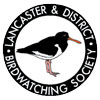Home › Forums › Discussions › Great Tit colour variation
-
AuthorPosts
-
Why do some male great tits have a much greyer background colour on their breast/chest/underparts whilst others are the ‘usual’ lemony yellow colour? The difference isnt between strong lemon and a pale lemon colour its more of a strong lemon v grey fawn difference. Juvenile birds perhaps?
Apologies if this has been covered many times before.Thanks.
Matt.The yellow colour in feathers is made from a component in the birds’ diet called carotenoids. Carotenoids are a family of chemicals made by plants which tend to be pigmented – so they form the orange in carrots and the red in tomatoes and other fruits. For birds, these cannot be made by physiological processes and need to be taken in as part of the diet. The intensity of the yellow is determined by a couple of factors at the time when the bird moults in autumn – first, the level of carotenoids in their diet and secondly their ability to use the carotenoids. Carotenoids serve several functions, as well as adding colour to the feathers, which might increase the chances of getting a mate, they are also used in immune system function and, for females, are deposited in egg yolks, which increases offspring quality. These various trade-offs can affect the plumage colour intensity. For example, if a bird is ill or has a large parasite load at the time of moulting, it might use up the carotenoids to bolster the immune system in defence of its health, so the feathers emerge rather paler than they would on a healthy bird or a bird that has access to a high quality food source. Some of these effects are also likely to be associated with age and sex.
This is a big field of research because of the link between individual quality and the plumage signal/marker. So if you want to read more, a google search on ‘carotenoid bird plumage’ will throw up plenty of results. Work by Geoff Hill and Kevin McGraw has been particularly important.
Ian Hartley
Many thanks Ian that’s a very comprehensive and most interesting reply and opened up a whole new level of birding for me. My initial, basic thoughts after reading would be for the opportunity for observers to count the number of paler males against the number of strongly coloured male birds which might perhaps give an indication of the health/breeding success of a population? Just a thought.
Many thanks again,
Matthew.
As an aside, I thought that the hedgerow berry harvest was poorer last Autumn than previous years, or perhaps just earlier than usual. -
AuthorPosts
- You must be logged in to reply to this topic.
